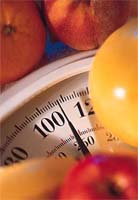The questions related to testosterone levels in women. Testosterone – Will I grow stubble on my chin and develop big muscles from running? Believe it or not this is a common question that women who have never run want to know when contemplating running or embarking on an exercise programme. This is all related to levels of testosterone, a taboo hormone women like to pretend is strictly reserved for men or emasculated female college athletes. It has often been used as a performance enhancing drug which has further given the hormone a bad reputation.
Women runners and testosterone levels
Testosterone is however a vital natural hormone for building muscle and therefore has an important role for all sports women.
What is testosterone?
Testosterone is a hormone that is mostly linked with male sexuality: growth of male sexual organs, deep mail voice, facial hair and sexual behavior of men. However, although this hormone is made in the testes of men, it is also made in the ovaries of women and the adrenal glands of both sexes.
Testosterone is very important for women because estrogen is made from testosterone, without the ability to make testosterone we cannot make oestrogen.
Testosterone is most important for althletes as it helps build muscle mass and allows an athlete to train harder and longer.
What Are “Normal” Testosterone Levels for Women?
What are considered “normal” levels vary from individual to individual and in the individual themselves depending on several factors: Testosterone levels vary during the menstrual cycle as do other sex hormones, testosterone peaks during the middle phase of the cycle around the time of ovulation; It also fluctuates during the day, levels are higher in women in the morning than later in the day; Levels also decline with age gradually before menopause but not over the time of natural menopaus. Testosterone levels of women in their 40s is half of those in their 20s.
Apparently women who have their ovaries surgically removed experience a sudden drop in their levels of testosterone (as much as 40 – 50%)
So it is very difficult to gauge what “normal” levels of testosterone for women are.
Remember Mary Decker Slaney?
Mary Decker Slaney was the 1983 world champion at 1,500 and 3,000 meters and once held every American women’s outdoor record from 800 through 10,000 meters. During the 1996 United States Olympic trials in Atlanta, she was one of the athletes routinely tested by the United States Olympic Committee for illegal drugs. The report on her test said she had a testosterone-epitestosterone level higher than the 6:1 ratio that international rules allow.
The I.A.A.F considers a T-E ratio of 1:1 normal for men and women, and the 6:1 ratio was adopted to account for natural variations. Slaney contended that the test was invalid for women, and that her suit be thrown out. Slaney argued that the test did not take into account the hormonal swings a woman goes through during menstruation while on birth control and nearing menopause.
Do some woman have naturally higher levels of testosterone?
Yes, abnormally high levels of testosterone in women can lead to a variety of symptoms such as developing male pattern hair growth onon the face and chest. More rarely and over time, some women may experience increased muscle mass, redistribution of body fat, enlargement of the clitoris, deepening of the voice, male pattern baldness, acne and/or increased perspiration
Do female athletes have higher levels of testosterone?
This is an interesting question. The effects of intense physical activity on female reproductive hormones has provided evidence that menstrual disturbances associated with too much oestrogen can affect bone density and physical activity can also have a range of effects on male reproductive function depending upon the intensity and duration of the activity and the fitness of the individual. In particular, endurance training may be associated with reductions in circulating testosterone levels. Since testosterone has important anabolic roles, alterations in reproductive hormone profiles may have detrimental skeletal consequences similar to those seen in females with menstrual disturbances.
Does testosterone affect the menstrual cycle of runners?
I’ve already mentioned that testosterone levels fluctuate and peak during the middle of the menstrual cycle. Some recent studies have now revealed that athletes who have polycystic ovary syndrome (which may be the cause of no periods) could explain some of the menstrual disorders found in “elite athletes”. This could mean that the slight increase in production of the male sex hormone testosterone which accompanies polycystic ovaries is offering a competitive advantage. Such an increase in levels, even if very tiny, can make it easier for women to build muscle mass and absorb oxygen allowing them to attain quicker results from their training and be encouraged to train harder and more often. Although this is an interesting finding, it is very well known that many endurance athletes (especially women marathon runners) have menstrual disorders (see amenorreah hyperlink) due to their intensive training.
See more on this in: Ovary problem ‘may aid athletes’ BBC News, Sunday, 20 April 2008 http://news.bbc.co.uk/2/hi/health/7354882.stm
Further Articles by Cassandra under the Women’s section covering :
- No Sweat .. Those Sticky Sweaty Problems
- Periods – Running Red Days
- The run-down on sports bras
- Women only events
- Paula’s pit stop
- Tokyo on a Trot
- The doggone Olympic marathon road
- Running with poles
- Tokyo on a Trot 2
- Footcare for the Woman runner
- Mauritanienne 200 Race Report
- Shoe Generation Gap
- Motivation
- Maintaining motivation
- Security on the run





























[…] TESTOSTE — RUN is a post from: Time-to-Run Women […]